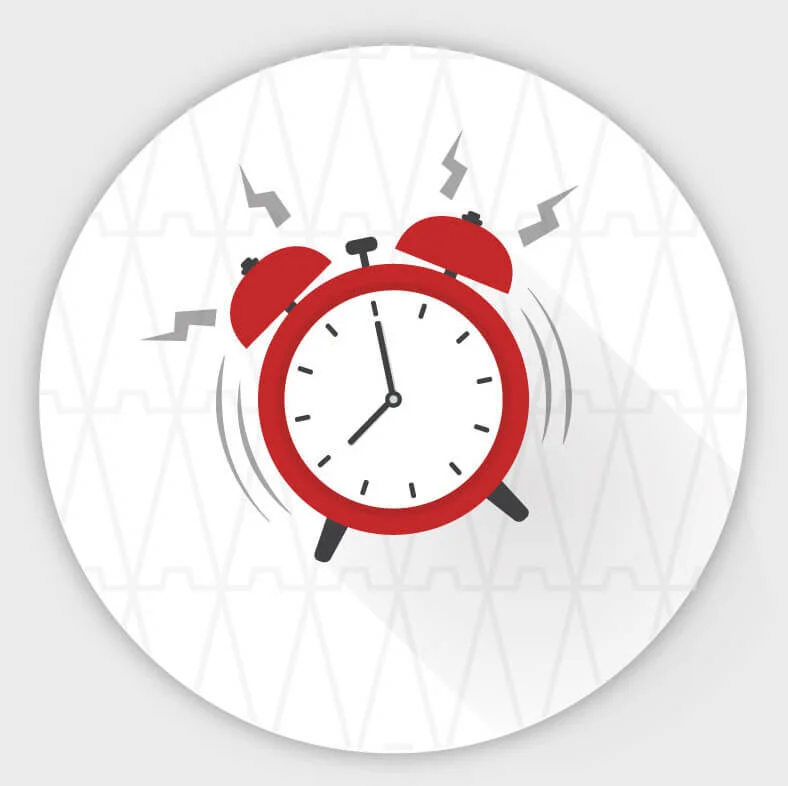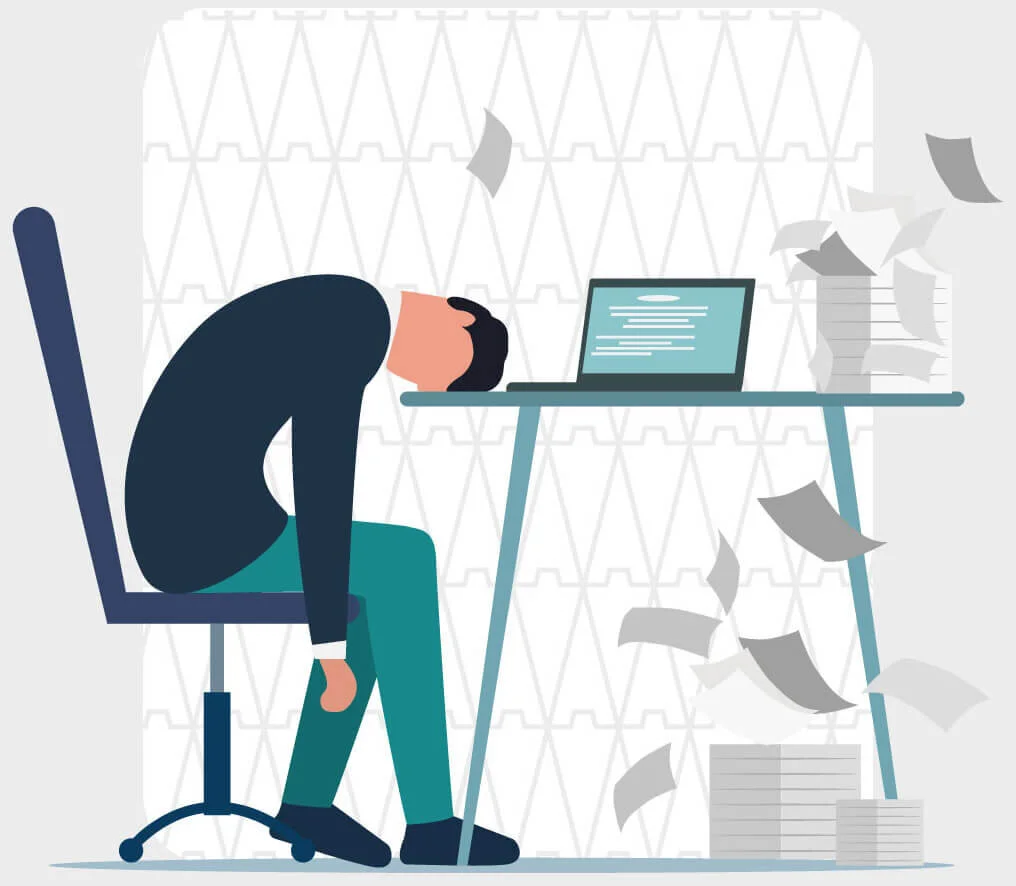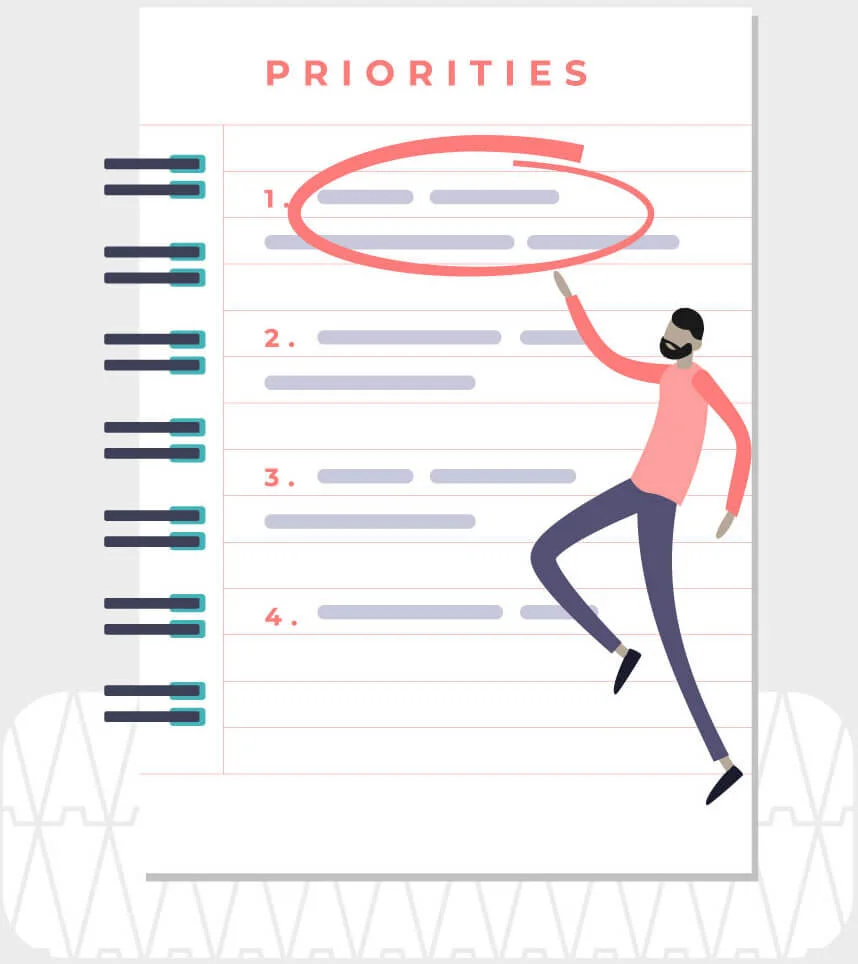Chapter 2: How To Stop Procrastinating
In the second chapter of this guide, we are going to explore procrastination and how we can overcome it.
PROCRASTINATION vs CAREFUL PLANNING
“I’m not procrastinating; I’m just planning everything through extremely carefully.”
Okay, that’s a possibility. Psychologist Adam M. Grant, author of the book Originals: How Non-Conformists Move the World, says; “Procrastination gives you time to consider divergent ideas, to think in nonlinear ways, to make unexpected leaps.” If that’s what you’re doing, then maybe your procrastination is actually ‘careful planning’. However, if there’s any chance that your careful planning is just another way of avoiding doing the actual work, be real with yourself and call it what it is.
Procrastination isn’t careful planning. It’s avoidance.
WHY DO WE PROCRASTINATE?
Because it’s a job we don’t want to do.
Because it’s something we’re unsure about so we’re holding off doing it for as long as possible.
Because it’s going to be tricky and time-consuming and we want to avoid the headaches and pitfalls that lie ahead: i.e. writing reports, conducting team assessments, having to interact with other people to gather the data we need.
Because procrastination feels good, at least initially. Behavioural Science tells us that our brains prefer immediate gratification over long-term payoff. Some people call this ‘time inconsistency’ while others call it the ‘motivational triad.’ It’s the reason why, even though we see the value in working towards future goals or undertaking a difficult task right now, we’ll often push all of it aside so we can do something that feels good in this very moment.
Take a health goal for example. We can all see the logic in going to the gym and eating a healthy diet so we’ll be fitter and stronger and avoid illness in later life, but why worry about what might happen in later life when we can eat junk food and lie on the couch today? If we know there are no immediate consequences to the instant gratification of enjoying that doughnut, human nature encourages us to eat the doughnut and tell ourselves we’ll eat more healthily and start exercising tomorrow. That would almost be fine, except tomorrow we’ll probably do exactly the same thing again.
Clinical psychologist Doug Lisle describes this as the “pleasure trap”: just like a shark is genetically programmed to “eat to survive and survive to reproduce”, human beings (and most other animals) are hardwired to seek pleasure, avoid pain, and conserve energy in our effort to survive. When our Present Self isn’t motivated to do something right now, usually because it doesn’t see any immediate reward in getting it done, it will look for an alternative that instantly makes it feel better. That’s another reason why we procrastinate.
But what if the reason you’re procrastinating doesn’t match any of those examples? Joseph Ferrari, professor of psychology and author of the book Still Procrastinating: The No Regret Guide to Getting it Done, says procrastination can be a nebulous phenomenon. While he was gathering data on how confusing procrastination can be to both the subject and the observer, procrastinators often told him they didn’t know what they were avoiding.
“Procrastination isn’t careful planning, it’s avoidance.”
How can we stop procrastinating?
Look at it from this perspective: if you’ve got to do it anyway, where’s the point in delaying the inevitable? In fact, procrastination can often make things ten times worse, especially if other people – managers, employees, team members – are waiting on your contribution. It can make you miss deadlines, or it could mean you do everything at the very last moment, skimp on details and potentially make unnecessary mistakes. That doesn’t send the right message to anybody, including yourself.
So, if you want to stop procrastinating, here are a few ideas you may want to try:
1. Temptation bundling
‘Temptation Bundling’ is a term coined by Katherine Milkman, a professor of behavioural economics at The Wharton School, University of Pennsylvania. It means that instead of procrastinating, you do the thing you’re avoiding while also doing something you enjoy. In her 2014 study, Milkman encouraged students to exercise by giving them iPods containing four audiobooks they wanted to listen to. One group, which could only access the audiobooks while at the gym, were 51% more likely to exercise than the control group, who were able to listen to their audiobooks whenever they liked. A third group, whose access to the audiobooks wasn’t restricted but who were encouraged to bundle the activities together, were 29% more likely to exercise than the control group.
By the end of the study, 61% of the participants voluntarily opted to continue working out at the gym (and pay for their gym membership) while maintaining their practise of listening to audiobooks.
Milkman uses a ‘temptation bundling’ strategy in her own life. “I only let myself get a pedicure when I’m simultaneously doing some work or catching up, in my case, on manuscript reviews,” she says, “For someone else, it might be catching up on emails or old copies of reports that need to be read for work.” Another example would be going to your favourite restaurant when you need to talk with a difficult colleague, or only watching your favourite TV show when you’re doing the housework.
Milkman’s also looked at how committing to a new goal at a natural “fresh start” point – be it the new year, a new performance cycle, a birthday, or even the start of a new week – can help motivate us as well. “Why?” she explains, “Because, in these fresh-start moments, people feel more distant from their past failures. Those failures are the old you, and this is the new you. When we can wipe out all those failures and look at a clean slate, it makes us feel more capable and drives us forward.”
2. Break the task down
It’s a fact of life that, when you start doing something, the easier it is to build up momentum and keep doing it. If you take The Slight Edge approach and cultivate habits that are small and easy to begin, and then gradually build upon them over time to accomplish your goals, you’ll be far less likely to procrastinate.
I’ve already talked about Jeff Olson’s excellent book The Slight Edge in previous articles, so today I’d like to mention The 2-Minute Rule.
The 2-Minute Rule states that “When you start a new habit, it should take less than two minutes to do.” In other words, the best way to overcome procrastination and laziness is to make the task as painless and straightforward as possible so that, once you start doing it, it’s easier to keep going than to stop. I suggested The 2-Minute Rule to a client who was procrastinating over writing a report because he didn’t want to transcribe the interviews he’d recorded on his Dictaphone. But, when he set himself five minutes to transcribe the very first part of the recording, he immediately found himself transcribing the rest of the file because it was easier to keep going until the job was finished.
Reducing the scale of tasks to make them more achievable can work in other ways too. Prolific novelist Anthony Trollope, who published 47 novels, two plays, 12 short stories, and 18 works of non-fiction during his lifetime, once said, “A small daily task, if it be really daily, will beat the labours of a spasmodic Hercules.” In Trollope’s case, he measured his progress in 15-minute increments. He set a goal of 250 words every 15 minutes and he continued this pattern for three hours every day. It meant he didn’t have the pressure of basing his success or failure on the completion of entire chapters or books. Instead, he could enjoy a feeling of satisfaction and accomplishment every 15 minutes while steadily working towards the more daunting goal of writing his novel.
Developing small habits will help you maintain the momentum to complete tasks and avoid procrastination.
The faster and more comfortably you complete a task, the more effective and productive you’ll become. If you can complete the first task of your day quickly, you’ll generate the momentum to keep going. You’ll also be far less likely to procrastinate over the tasks ahead.
But what if the first task of the day is something you really don’t want to do?
3. Eat the frog
Mark Twain famously said that if you eat a live frog first thing in the morning, you can spend the rest of the day knowing the worst is behind you. In other words, you should always do the worst task (i.e. the job you’re most likely to procrastinate over) at the very start of the day. Often, the best way to set yourself up to eat the frog tomorrow morning is by choosing the frog you’re going to eat before you stop working tonight. Whether it’s the email you don’t want to write, the presentation you don’t want to work on, or the deadline you’ve been dreading, get it done while your mind is clear, the workplace is quiet, and before emails and phone calls start pulling you in a dozen different directions. Eat the frog early, and the sense of accomplishment will help carry you through the rest of the day.
4. Visualise yourself completing the task you’re procrastinating about
Hal E. Hershfield, psychologist and associate professor of marketing at UCLA’s Anderson School of Management, has studied how our perception of time can affect decision making. He believes that people tend to overestimate the degree to which they will feel good about a positive outcome and bad about a negative outcome. Instead, if we visualise ourselves at a point later in life and see how our current decisions will affect this future person, it can help us imagine the long-term consequences and make better immediate decisions.
“It’s very similar to eating unhealthily today and suffering the consequences over time,” Hershfield says, “(but) when people visualise and more deeply consider their future selves it increases the tendency to act in ways that are more future-oriented.”
Visualisation is a technique that’s already used by many successful sportspeople. Eve-Marie Blouin-Hudon, who conducted a study about procrastinating at the Carleton University in Canada, thinks visualisation can end our procrastination too. “People who procrastinate feel disconnected from their future self,” she says, “The more you imagine yourself in the future, the more emotionally connected you feel to that self.”
When you visualise, imagine working on the task and keep the visualisation specific and believable. Don’t just picture yourself completing the job, pay attention to every detail from start-to-finish. It’s best to visualise at a time of day when your mind is naturally quiet (like the mid-afternoon slump) and give yourself 15 minutes to do it. If you don’t master the whole visualisation in one go, repeat it over several sessions as necessary. Sometimes (and especially if you’re not sure why you’re procrastinating) it can take sustained practice to put the visualisation together and move forward.
The reasons we procrastinate are personal to each of us.
With a few techniques and a little bit of self-analysis and positive self-talk, we can usually find ways to overcome it.
But, if nothing you try seems to work, you might need a little bit of a steer along the way, especially if you don’t understand why procrastination is happening or it’s creating problems that are overwhelming you. In those cases, it’s worth seeking the advice of an expert coach who will help you recognise your blocks, identify solutions, and suggest the best ways forward.
In the words of Dr Robert Anthony Kreucher, author of Harmonious Healing: A Guidebook of Energy Medicine for the 21st Century, “Waiting is a trap. There will always be reasons to wait. The truth is, there are only two things in life, reasons and results, and reasons simply don’t count.”
“The truth is, there are only two things in life, reasons and results, and reasons simply don’t count.”
HOW to overcomE limiting beliefs: THE COMPLETE GUIDE
Read the next chapter.
Or return to the course overview.








